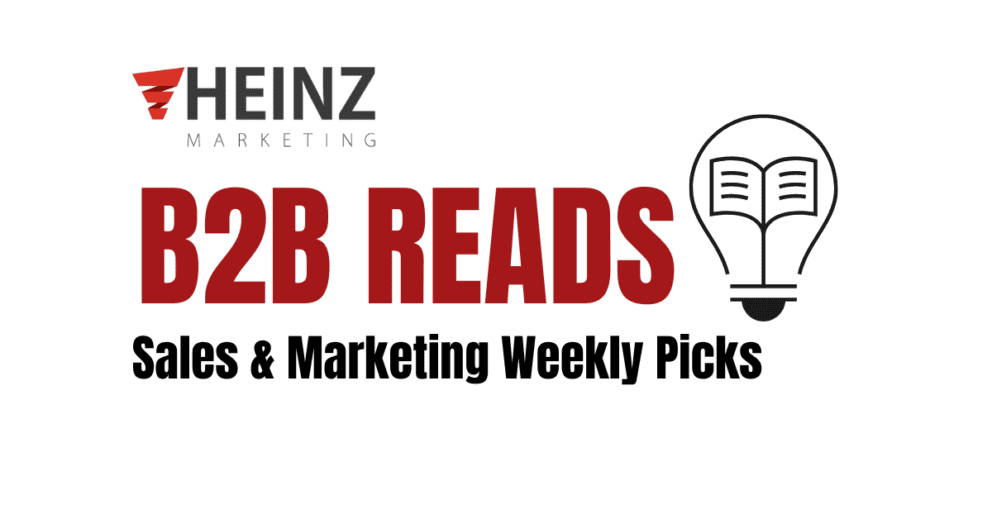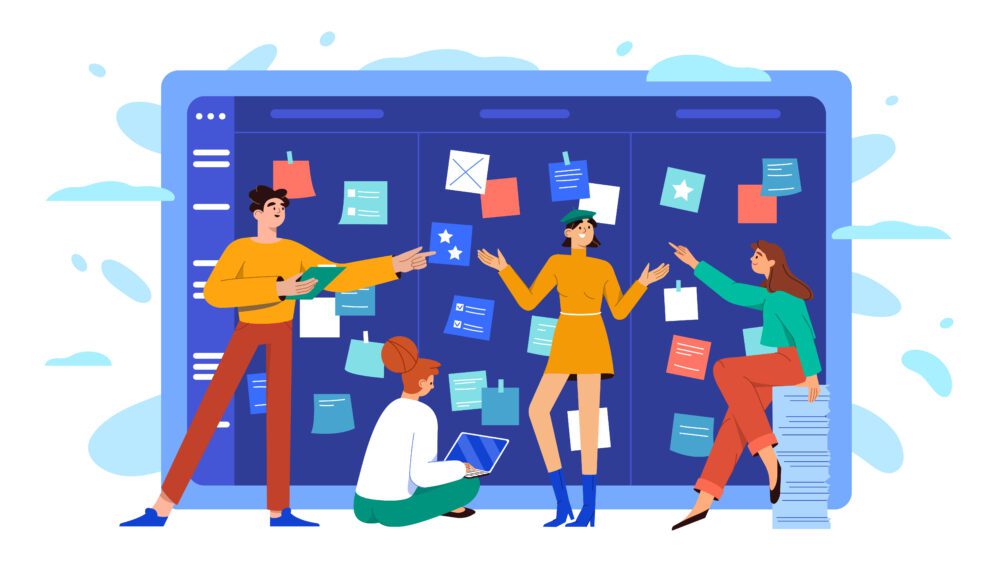Un-Gating your Content in the Age of Content Saturation

By Sarah Threet, Marketing Consultant at Heinz Marketing
You’ve spent months developing a content strategy and weeks laboring over a piece of content that you have deemed “high value”. Conventional inbound marketing tells you that you need to create a landing page for this content and gate that content behind a form that leads will need to fill to view and download your content.
You expect that the kinds of leads who are willing to fill out your form to download your content must be well-qualified fits for you to pursue and further target, but instead you start receiving fake emails like “nonya@biz.com”
Why aren’t these leads converting? Why are they unwilling to give you accurate contact information despite downloading your content? Doesn’t downloading your content symbolize some kind of intent or interest?
Well – not necessarily!
In the age of “content shock” (as coined by Mark Schaefer), the supply of content is so high that there is significantly less of a need to download gated content when there is likely ungated content of equal value (this isn’t always the case and I will discuss shortly that there are some exceptions where you may want to still gate your content). Your prospects are fellow human beings who care about their privacy in the age of digital media.
Consider how many times you, yourself, likely a fellow marketing professional, have hesitated to fill out a form with your personal info to download a piece of content you do not yet know to be valuable. I certainly have provided fake emails for content downloads, and even though I work in marketing, I don’t feel bad about doing it because 90% of the time I know it’s not going to tell me much I couldn’t find elsewhere for “free”. Shoot, half of the time I feel like the content doesn’t match the title and like I was duped into giving away my information, and then I just feel suspicious about the brand’s credibility or morals. Just because you have someone’s information doesn’t mean that you have their interest.
So you want to drive more qualified leads with your content – what should you do?
Content Shock (and Saturation)
Nearly ten years ago when Schaefer coined the term “content shock”, there were already analyses being conducted that illustrated that while brands increased content output on average by almost 80%, their average content engagement decreased by 60%, thereby indicating a decline in content marketing cost-effectiveness. Great content takes time to produce; while it may be put out there for free, it is not free to create.
Marketers have grown to believe that inundating viewers with content every day, sometimes multiple times per day, is the best way to ensure they reach some engagement, but it doesn’t really increase the quality of engagement – in fact, it could burn out folks to see your brand everywhere, and not linked with anything of significant value. Every person has a physiological limit to the amount of content they consume (those of us who spend too much time on social media know it to be named “content fatigue”). Schaefer said, “The idea of ‘great content rises to the top’ is over.”
In response, content marketing thought leaders have begun to invest more time into higher value pieces of content (typically longer form, data-heavy pieces of content, or even longer, informational and engaging videos) rather than pumping out something to share every day to keep their feeds full. Some of them have even begun completely un-gating their content and have seen some great success.
To Gate or not to Gate? Examples from IMPACT and Drift
Whether or not you choose to gate or un-gate some of your content depends on the kind of content and your own business. Like with all marketing, there is no one-size-fits-all. Also like with all marketing, it’s necessary to test new strategic tactics. IMPACT and Drift are two of these companies that have seen success from un-gating their content.
IMPACT’s Story
IMPACT had noticed that while their gated guides and eBooks brought in thousands of leads, very few were qualifiable or would ever convert and were simply downloading the content for reference material and with no actual interest to buy. In response, they ungated their guides and eBooks, saw that their volume of leads did not decrease, and instead, the number of qualified leads increased; they were talking to more people who were a good fit rather than wading through fake emails and wasting time trying to reach folks who would never be interested in responding.
IMPACT’s example is a healthy reminder that you may be hitting your lead goals with the content you pump out and gate, but are those leads really engaging with you in a manner that is profiting your business?
Drift’s Story
Drift’s CEO began to realize this dehumanization of his company’s leads, took a step back, and said it very well that, “We’ve lost the importance of a great story and truly connecting with people. We live in this world where it’s all about content, content and more content. And SEO. And ranking for this keyword and that keyword. And algorithms and conversion rate optimization. Pieces of that stuff are still important to marketing, but overall, I think we’ve lost our way. Marketing today has become more about gaming the system and get rich quick schemes.”
I am a very data-driven decision maker, as are many marketers, and certainly SEO strategy and having an excellent attribution model is helpful, and even often necessary. But we frequently forget about qualitative data, and we often overlook that all those numbers coming in could just be saying that you’re trying too hard and getting the wrong people in your pipeline.
Drift read BuzzSumo’s analysis of one million blog posts and found that 50% of content only gets eight shares or less, indicating that there’s way too much content out there for people to wade through and figure out what is worth their time to read. It’s easy to believe that your content is amazing when you’ve spent a lot of time and thought on it, but the reality is that someone else has probably said it too, and their version of the same content may be un-gated.
In response, Drift un-gated all of their content and even got rid of all of their forms! They only kept a form for email subscription and a form to start using their product. In addition to that, they reduced their blog publishing to just 1-2 posts per week, treated content primarily as a branding tool (not a lead gen tool), and they began looking at qualitative metrics in addition to the quantitative ones such as positive feedback from customers and influential people in their industry. These strategic changes, in combination with their use of website chat bots to actively engage leads when they are live on the page, increased their qualified leads.
Still hesitant about un-gating your content? Here are some cases where you might still gate your content, as well as some other strategic options to test…
I will always suggest that you leave blog posts un-gated, and the same goes for case studies as case studies may be necessary as proof of your company’s performance (so why gate that?). But I understand that in some cases, pieces of content may have taken a lot of time, cost money, or use company-specific data. If your content includes information that cannot be found anywhere else, then it is sensible to deem it premium enough to be gated.
However, even in those cases, I have a suggestion to test: un-gate the content only so that it is viewable on the website but not so that it may be downloaded and shared. If your content really is that valuable, whether a lead can read it for free or not, they will download it and share it with their colleagues. If you still gate the ability to download the viewable content, someone still choosing to download it may be indicative that they felt the content was worthy enough of sharing their information with you. Take this a step further to collect qualitative data by including a question on the form that asks, “Why are you choosing to download this content?” If they say something along the lines of, “I found it to be a valuable read and I want to share it with my colleagues”, then that’s a lead that very well may be qualifiable and worth your time contacting.
Similarly, you may test timed previews, or a preview of the first couple of pages, but I find that these previews are too quick to really get a sense of the value, or that the meatiness of the guide or report is further in and not shown in the preview. You still might get some interesting data, and that data might even suggest un-gating it further. I’m generally all for baby steps.
Gating live webinars is also fair as the form acts as a way of signing up and gaining access to the livestream, but I suggest un-gating the recorded video or using one of the previewing methods mentioned above.
Drift’s use of chat bots on their website is another excellent investment rather than investing more in pumping out content. All leads who engage with the bot are considered “warm” rather than the cold leads visiting your site. These leads are also warmer than the ones who fill out a form to download your content, because they purposefully want to speak to someone in the company rather than unwillingly giving away their information in exchange for reference material. Drift found that out of 20 chat conversations, 4 were sales related. You might not need to un-gate high-value content if you invest in chat bots – in fact, when appropriate, you could send these warm leads an ungated version of the content as a PDF and as for their input on the content.
So what kind of content is going to resonate in the age of Content Shock and Fatigue?
Here at Heinz Marketing, we specialize in B2B marketing and encourage ABM strategy. I personally strongly believe in building your brand and personalizing your messaging. Not every piece of content you produce needs to resonate with every kind of lead you will draw in. Focus on messaging to your ICP and the personas in your ICP’s buying committee. Focus on improving your messaging for personas who haven’t been as engaging but are necessary for a successful deal. Focus on developing a brand and product that speaks for itself – generating shares and referrals. Think about the brands you admire and how few of them required you to fill out a form before getting your buy-in? If you are selling a product, perhaps un-gating using that product to a certain extent (think free trials or basic software packages).
Heinz Marketing is a small company and we understand un-gating all your content can be intimidating, especially if you don’t have the best means of capturing lead data. We don’t currently un-gate all our content, but we are testing some new strategies listed in this blog with the arrival of our exciting new website! I will be certain to update you in the future as to the results of our own content strategy updates.







